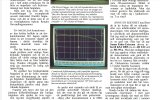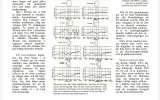I admit that I didn't directly compare, in the same room, enough speakers with different dispersion widths to form a meaningful opinion on that matter.IMO the only real effect of wide top octave dispersion is expansion of the sweet spot. Reflections aren't really an issue due to air absorption and head shadowing. But the direct sound is more consistent across a wider area, hence the wider sweet spot.
Can you point me to that Harman research? After all, some of their most popular monitors (JBL 7-series) have wide and constant dispersion through the top octave. They do poorly on the "preference score" as a result, but Harman obviously released them anyway.

AES E-Library » The Subjective and Objective Evaluation of Room Correction Products
A panel of eight trained listeners gave comparative ratings for five different room correction products based on overall preference and spectral balance. The room corrections were applied to a single loudspeaker/subwoofer in a typical semi-reflective listening room, and evaluated using three...
Well, this is more about the final in-room curve, and nothing really stops a constant directivity speaker from achieving the "correct" downward slope, but it's harder than with a speaker that naturally narrows as frequency increases. Harman also displays a bit of inconsistency with how JBl products measure versus Revel products.
Additional blind test results that support my point:
We don't have the tweeter measurements by itself yet, so for now, I would expect most of the effect to be due to that special phase plug/coherer and waveguide. Size and linear excursion are similar to BlieSMa T34A.This tweeter looks really impressive. Honestly it's the first since the aforementioned JBL 7-series driver/horn that has my attention as a real potential advance of the art.

 OP even wrote it in the thread title. Some people...
OP even wrote it in the thread title. Some people...

